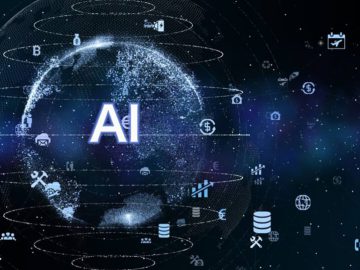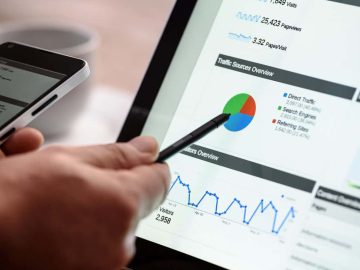Prof. Aleks Farseev is an Entrepreneur, Keynote Speaker, and the CEO of SoMonitor.ai, a GenAI Marketing Communications Analysis Platform.
Marketer using A/B testing
batjaket – stock.adobe.com
With its latest advancements, AI has revolutionized the way businesses connect with their customers. For example, at our company, we’ve leveraged AI to craft brand strategy. We started by gathering content from competitors, focusing on the most engaging content.
Using LLMs, we categorized this content into distinct communication concepts: brand persona, customer profile, products, tone of voice, topics, and customer needs. We then used this labeled content to cluster customer personas and audience tensions. This, in turn, drove our creative storytelling and content briefs, which we could pass to our agency for production.
By grounding these insights with audience and trending topic data, such as Nielsen reports or Google Trends, these insights become invaluable. Our strategy is now based not only on what is popular among our competition but also on actual audience hurdles and topics of interest. Additionally, using a GenAI approach in communication planning helps us save significant time compared to manual methods. Ultimately, this approach has significantly increased our share of voice by enabling more diverse communication.
To help other marketing leaders harness the power of AI, I asked members of the Marketing and Advertising Group, a community that I lead through Forbes Technology Council, to share their top tips to develop AI-driven strategies.
1. Predictive Customer Insights
Our marketing strategy now leverages AI to predict customer needs and behaviors. We can anticipate trends and adjust our strategy using machine learning algorithms to analyze historical data. This predictive capability enables proactive engagement, offering solutions before customers realize they need them. It enhances our ability to meet customer expectations and stay ahead of market trends. This approach keeps us competitive and aligned with future demands. – Jagadish Gokavarapu, Wissen Infotech
2. A/B-Tested Creatives
From the perspective of marketing technology, the ability to A/B test the creatives that were clicked and resulted in conversions. It sounds simple enough, but it is indeed a set of customized programs to leverage machine learning and AI into this targeted approach. It changed the game towards incremental benefits. – Sireesha Chilakamarri, AdMedia
3. AI-Enhanced Global Campaigns
Our AI-enabled marketing team uses AI-driven data analysis to see what works and create hyper-personalized consumer content. Following this approach, we can now produce animated, AI-enhanced global campaigns while ensuring our team adapts and scales efficiently over time to meet evolving market demands. With AI doing much of the heavy lifting, our human marketers are then freed up to spend time on strategic initiatives and the creative aspects of marketing. – Faisal Hussain, Synechron
4. Marketing Materials For Dissemination
With AI advancements, being able to quickly draft, review, and update marketing materials for dissemination has been easier to develop. Prioritization and securing sensitive and proprietary information are top business concerns with AI and cloud-based connections. The focus has shifted more towards overwatch of employees placing data into AI systems, providing ongoing employee training on the use of AI systems, as well as staying updated on the latest threats to AI systems. – Dan Sorensen, Air National Guard
5. Varied Marketing Campaign Images
Utilizing AI image tools has allowed us to quickly generate varied marketing campaign images. With such small margins in performance-based advertising, being able to quickly test unique visual concepts can lead to meaningful performance improvements. Given the variability of AI output, altering the team structure so there is clear ownership of the review process is critical. – Dave Rosen, Wimo Games, Inc.
6. AI-Driven Personalization
We recently integrated AI-driven personalization into our marketing strategy. This change helps us tailor content and ads to each person’s preferences and actions. As a result, our campaigns are more engaging, leading to better customer satisfaction and loyalty. By staying ahead of trends, we’ve boosted our campaign performance and ROI, maintaining our competitive edge in a fast-changing market. – Evgeny Popov, Verve Group
7. AI Insights To Budget And Optimize Campaigns
We’ve incorporated AI insights to budget and optimize campaigns in real time, significantly boosting ROI. Additionally, our AI-driven marketing data governance ensures that all campaign settings and industry benchmarks are consistently tracked and adhered to across all activities. These advancements keep us agile and compliant, enhancing overall campaign performance and strategic alignment – Roman Vinogradov, Improvado
8. Social Media Posts
We’ve built internal Gen AI tools for our marketers that save significant time and promote creativity. Examples include content generator apps that can create assets like social media posts, invitation copy and derivate content and headlines with the push of a button. Multiple options are provided and everything must undergo human review and approval. Efficiencies are then used to redirect the saved time back to more value-added marketing activities. – Matthew Lieberman, PwC
Forbes Technology Council is an invitation-only community for world-class CIOs, CTOs and technology executives. Do I qualify?





